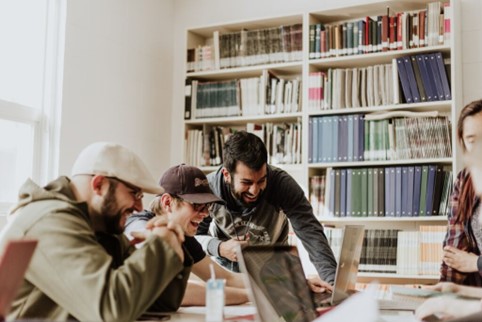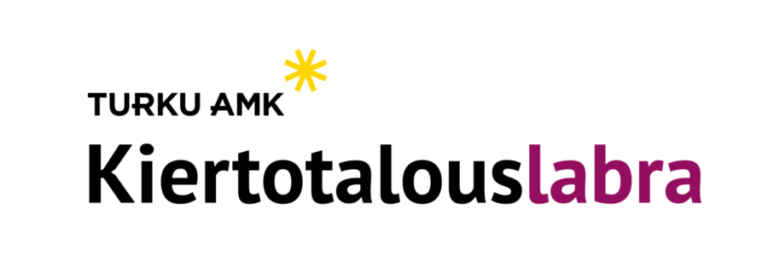Osallistu kansainvälisiin projektiopintoihin

Osallistu ainutlaatuiselle projektikurssille ja hanki hyödyllistä osaamista työelämään! Turun AMK ja Hogeschool Utrecht järjestävät projektikurssin, jossa opiskelijat työstävät kahta työelämästä tulevaa toimeksiantoa. Valitse toimeksiannoista itsellesi mieluisampi ja saat erittäin hyödyllistä kokemusta kansainvälisyydestä ja projektityöskentelystä hybridimaailmassa.
Kurssi sopii AMK- ja YAMK-tason tradenomi- ja insinööriopiskelijoile. Opiskelijat työskentelevät kansainvälisissä ryhmissä, ja kurssiin kuuluu myös kenttätyö kehittämiskohteessa Turussa tai Utrechtissa. Projektiopinnot sijoittuvat ajalle 11.11.2024–31.1.2025. Lisätietoa lyhytvaihdosta ulkomailla voit lukea täällä (Messi).
Tutustu alla toimeksiantoihin tarkemmin ja hae mukaan laittamalla sähköpostia osoitteeseen kiertotalouslabra@turkuamk.fi otsikolla “Projektiopintoja”. Kumpaankin projektiin otetaan enintään 6 opiskelijaa.
Lisätietoja kurssista voit tiedustella osoitteesta kiertotalouslabra@turkuamk.fi.
Project 1: Building a new circular waste reception facility in Turku
Background and problem statement
LSJH is a local municipal waste company that collects waste in 18 municipalities in and around Turku, Finland. They are owned by these 18 municipalities and organize residents’ waste management and sustainability education. Residents (about 450.000) are guided to a sustainable lifestyle by providing convenient collection points for residential and public waste. 98% of the waste received is used as materials or energy.
LSJH is planning to build a new waste reception facility with a Visitor Center, that could also function as a showroom for sustainable construction. They are aiming to use as much re-used and re-cycled materials as possible. A consultant office already is running the planning process, but there is a need for more fresh insights from students. It is challenging to procure and use innovative and new circular methods and materials, especially in the procurement process of a public actor such as a municipal waste management company. LSJH is interested to learn about EU and local legislation on public procurement and circularity. What obstacles are there and how can innovative and unique solutions be integrated?
The project requires you to research which good practices in the area of circularity and procurement there are in your region. LSJH is looking for innovative approaches and (EU) legislation from your region that could be applied in Finland. Furthermore, develop a proposal for the new circular waste reception facility.
Suggested approach
- Become familiar with the plans for the new waste reception facility in Turku, interview local stakeholders
- Make an overview of relevant EU and regional legislation for public procurement and circularity
- Select a couple of good practices from your region, interview stakeholders and analyse which elements could be applied to LSJH
- Develop a circular design for the new circular waste reception facility based on the opportunities and obstacles derived from your research on circular procurement
Deliverables
- Evaluation of EU legislation and regional legislation supporting circular procurement
- Overview of good practices in circular public procurement and an evaluation of how these could be applied in the process of LSJH
- Develop a plan for the new circular waste reception facility
Project 2: Circular business models for Heijmans
Background and problem statement
Heijmans is a construction and engineering company in The Netherlands. The company develops and constructs houses, offices, infrastructure as well designs, builds and maintains electro-technical and mechanical installations. Heijmans has a strong commitment to sustainability and circularity and aims to improve their processes to recover and reuse waste materials from construction and demolition projects.
Currently, Heijmans is developing an approach to recover and reuse materials (such as steel and concrete debris) in a project called ‘harvesting policy in demolition projects’. This policy should impact the entire company (so all business lines involved) and reduce CO2 emissions and waste as well as conserve resources. However, de-assembling and processing certain materials and residual flows are associated with high costs. Heijmans, is therefore exploring the economic benefits of such a circular system while keeping operational costs under control.
This project should lead to a ranking ‘ladder’. The ladder should display the most important residual flows based on availability/scarcity and environmental impact. On top of this analysis, the costs for recovering each of the residual flows should be calculated. Based on these insights you will develop a ranking ladder, providing insights and advice for Heijmans in construction and demolition projects. Research question for this project is to find an optimal balance between the environmental impact and the costs of recovering and reusing demolition materials?
Project objective
- Develop quick wins for Heijmans: which materials can easily be reused, how to limit waste and conserve resources
- Calculate the costs of de-assembling residual flows
- Design a ranking ladder that can be widely used
Suggested approach
- Choose, in cooperation with Heijmans, a case study project in Utrecht to start your analysis of residual flows
- Make an inventory of all the residual flows from your case study and develop or select indicators to decide upon their environmental impact
- Describe how these residual flows can be reused and calculate the costs of reusing these materials
- Develop a tool (the so called ladder) to rank the residual flows from your case study in terms of environmental impact and economic benefit
- Design your tool in such a way that it can be applied to other projects than your case study only
Deliverables
- Overview of residual flows and costs for reusing these materials for your case study
- Ranking ladder that can be widely used on any demolition project
- Report detailing which quick wins can be implemented by Heijmans including references to existing research and good practices.
